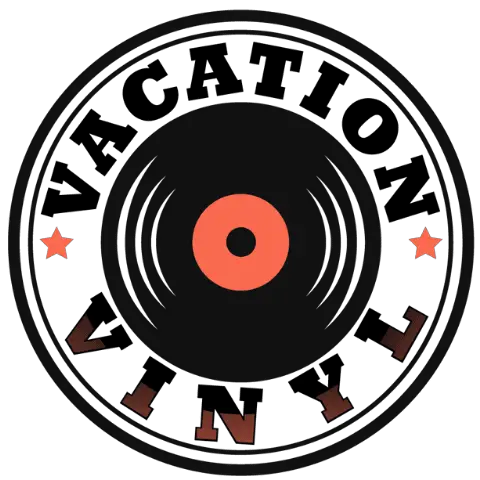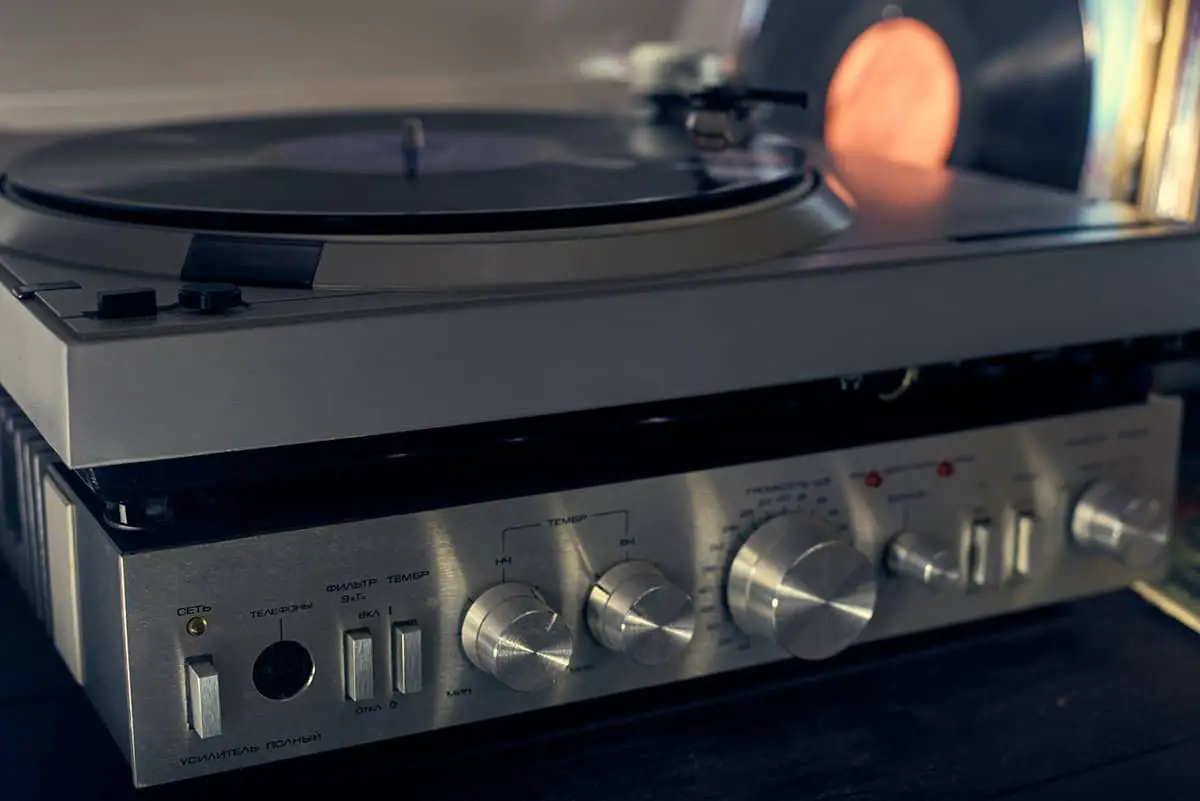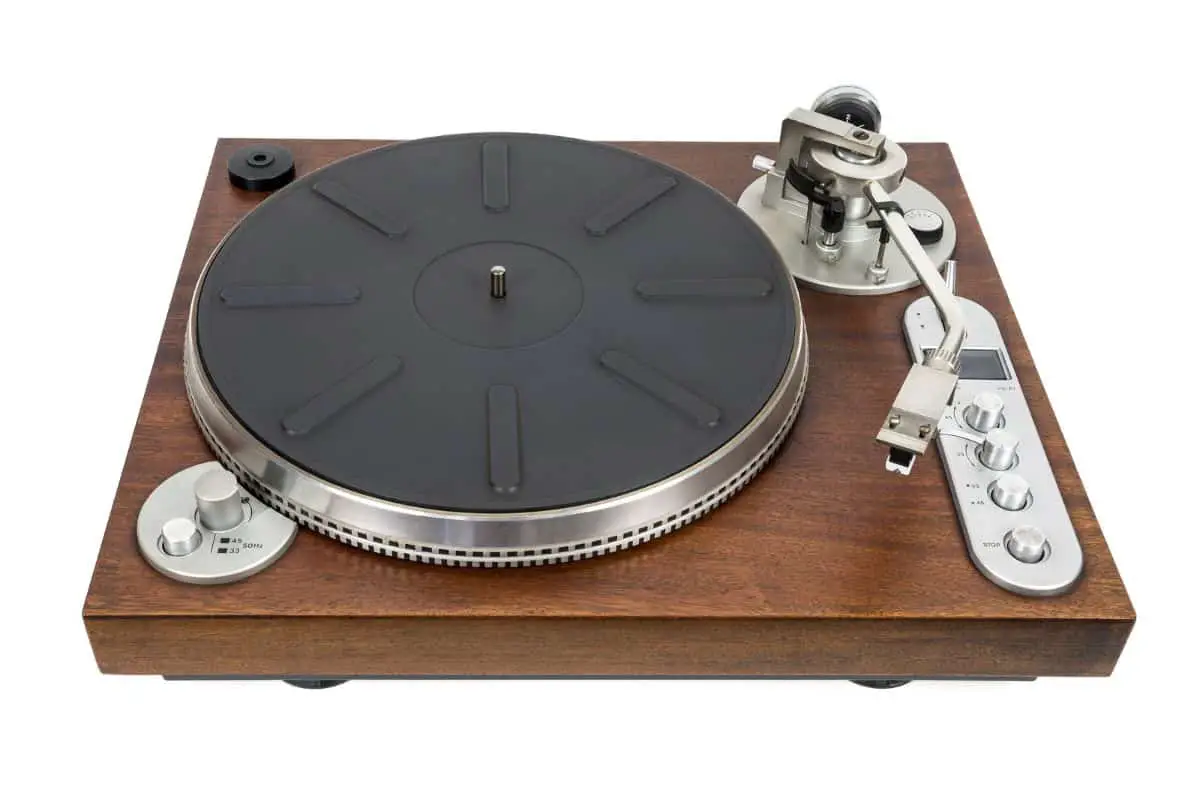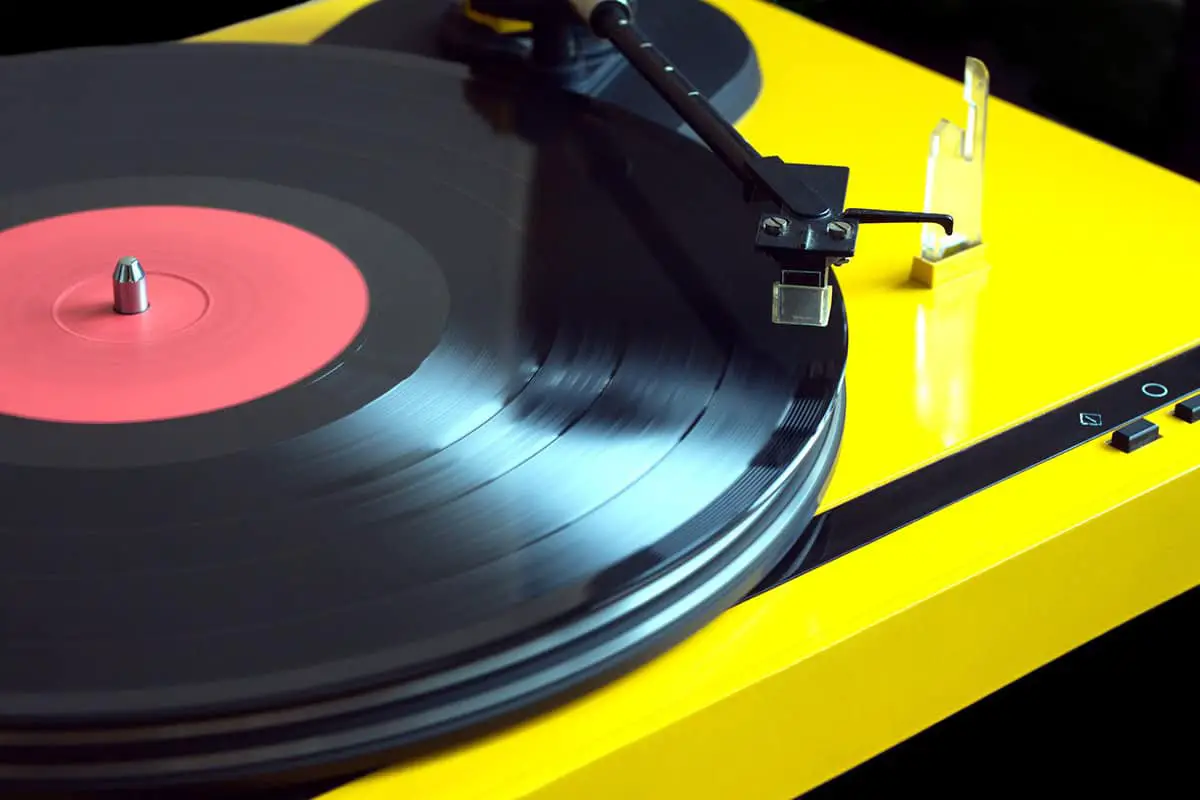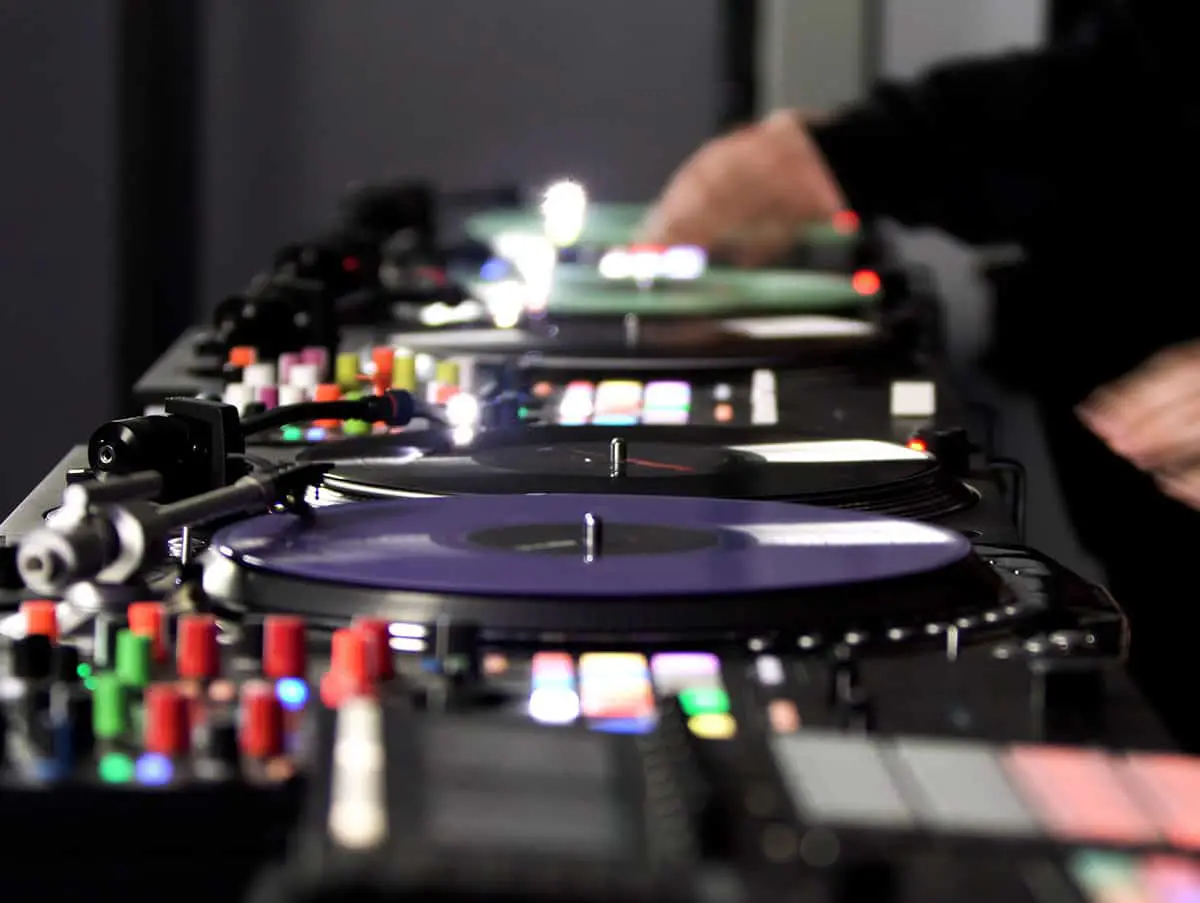This post contains affiliate links.
If you own or are looking for a turntable, it means that you appreciate a good, smooth sound, and you enjoy high-quality sound systems. It also means that you need an amplifier, in which case you might be considering choosing a vintage one. So what are the best vintage amplifiers for you out there?
Here’s a list of some vintage turntable amplifiers that are generally considered to be among the best.
- NAD 3020
- Marantz 2270
- Pioneer SX-1250
- Yamaha CR-1020
- Sugden A21
- Mission Cyrus 2
- A&R A60
- Audiolab 8000A
- Creek CAS4040
- Naim NAIT
This article elaborates on the features that make these vintage amplifiers the best choice for your turntable. We’ll also give you some useful points to consider before choosing a vintage amplifier.
Table of Contents
Factors To Consider
Amplifiers are essentially devices that boost (or indeed, amplify) the power of a signal. You need an amplifier to have a strong enough signal to drive the speakers.
An amplifier with an AM/FM radio tuner built-in (an integrated amplifier) is called a receiver. In order to choose the option that would best suit your needs, you should keep in mind where your priorities lie when looking for an amplifier.
Some important amplifier features that you might want to consider before making an expensive purchase are:
- Power (measured in Watts): the maximum power that an amplifier can extrude.
- Headroom: the extent to which an amplifier can reproduce sudden, very loud sounds.
- Distortion: anything that degrades the signal and, consequently, the sound’s quality.
- Output Impedance: the amount of restriction of a speaker to the power of an amplifier.
- Frequency Response: the extent to which the output of the amplifier is affected by the frequency of the signal received by the input terminal.
All of these features contribute to the quality of the sound and the general experience of enjoying music recordings. Once you know the characteristics of an amplifier, all you need is to review your options. Nowadays, a lot of audiophiles choose vintage amplifiers, and not just because they’re cool and interesting to look at.
New isn’t always better when it comes to hi-fi. There are a lot of vintage amplifiers that not only work perfectly but are also aesthetically pleasing while being reasonably priced. Having said that, before you choose to go the vintage route, you need to make sure that the amplifier is in good condition and safe to use.
So what are the best vintage amplifiers for turntables out there?
Best Overall: NAD 3020
Specifications:
- Power output: 20 watts per channel into 8Ω (stereo)
- Frequency response: 10 Hz to 70 kHz.
- Total harmonic distortion: 0.02%
- Input sensitivity: 2.5mV (MM), 150mV (line)
- Signal to noise ratio: 75 dB (MM), 110 dB (line)
- Dimensions: 420 x 96 x 240 mm (17 x 4 x 9 in)
- Weight: 5.26 kg (11.60 lbs)
- Year: 1978
- Price: c.$150
NAD 3020 is probably one of the most classic and well-known vintage amplifiers. It was a game-changer for amplifiers in many ways, and it became one of the best-selling integrated amplifiers.
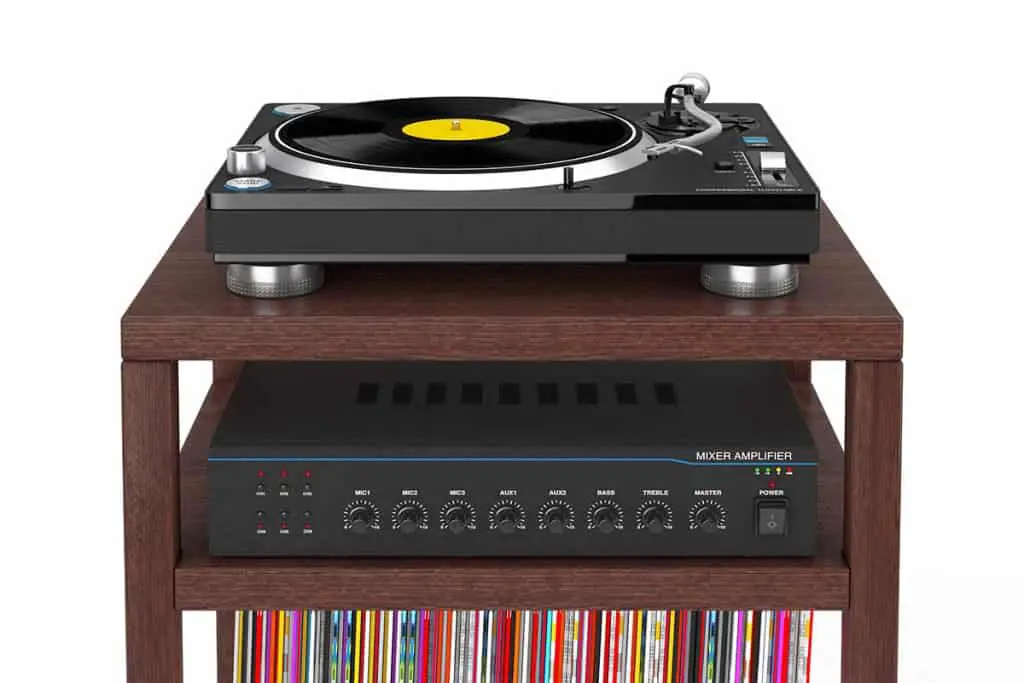
The power output of NAD 3020 is among the lowest and yet it can outperform speakers with a much higher power level. This is thanks to the design of the power supply system that allows it to perform exceedingly well with more complex speakers.
NAD 3020 is the best example of a high-quality budget amplifier. The sound is soft and sweet, and the bass is incredible. These qualities also make it ideal for those buying an amplifier for the first time who want to experience its benefits without making a risky investment.
This amplifier has a notable feature called “Soft Clipping,” which limits the output of the amplifier in cases when it’s being pushed to higher volume levels. This way, the sounds stay cleaner and softer, avoiding distortion.
It’s hard to find better features and value when it comes to the under $200 price point, this is why the NAD 3020 takes the best overall title.
Marantz 2270 Stereo Receiver
Specifications:
- Power output: 70 W per channel into 8Ω (stereo)
- Frequency response: 7Hz to 50kHz
- Total harmonic distortion: 0.3%
- Input sensitivity: 1.8mV (MM), 180mV (line)
- Speaker load impedance: 4Ω to 16Ω
- Dimensions: 17-21/64 x 5-25/64 x 14 inches (356 mm)
- Weight: 38.5 lbs (174.6 kg)
- Year: 1973
- Price: $550 – $1300
Marantz is well known for building some of the finest pieces of hi-fi, especially its 2200 series of receivers. Audiophiles regard Marantz receivers as some of the best, being able to go against even modern amps nowadays.
Marantz 2270’s sound is rich, full, and warm, ideal especially for orchestral recordings; reviewers say it feels like it fills the whole room. The design is unique and quite memorable with the blue backlit dials and the aluminum faceplates. Its combination of features make it ideal for more experienced users and collectors looking to find the finest options the market has to offer.
When it comes to the price, the Marantz 2270 is among the more expensive Amplifiers, which makes it a true investment piece. You might find one in pretty good condition at around $550, but others are valued at more than $1200. While it might be costlier than others, it’s relatively easy to find replacement parts if you would like to service it..
Pioneer SX-1250 Stereo Receiver
Specifications:
- Power output: 160 watts per channel into 8Ω (stereo)
- Frequency response: 10Hz to 50kHz
- Total harmonic distortion: 0.1%
- Speaker load impedance: 4Ω (minimum)
- Dimensions: 556 x 186.5 x 464.5 mm (22 x 7.3 x 18.3 in)
- Weight: 29.2 kg (64.4 lbs)
- Year: 1976
- Price: $800 – $3700
A beast from the 1970s, the Pioneer SX-1250 is a high-quality receiver with plenty of power and a sleek, vintage design. The sound is clear and detailed. The sound quality is superb, and the wood-side panels with the silver faceplate make this receiver a classic. It’s quite large and heavy, a testament to the tendency of manufacturers’ wattage wars at the time for big, powerful amps.
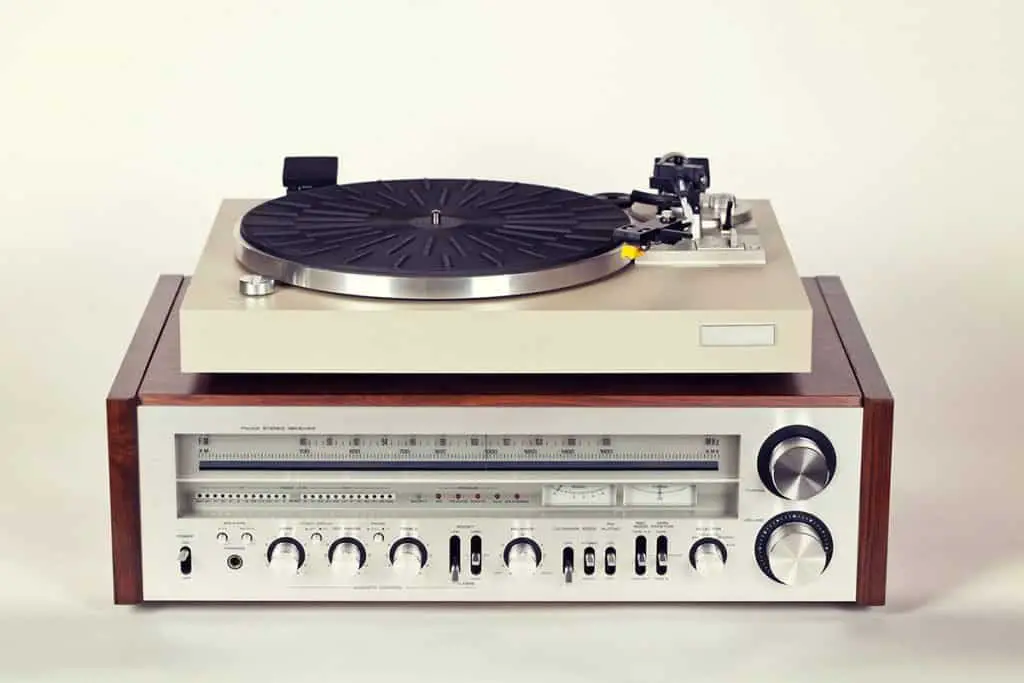
The price varies, but it’s possible to find it on sale. One downside is that some of them need restoration and new parts, because at the moment they’re more than 40 years old.
The good news is that finding Pioneer SX-1250 parts in decent condition isn’t as challenging as you may think.
However, you can also find some options in perfect condition, which are reasonably much more expensive.
Yamaha CR-1020
Specifications:
- Power output: 70 watts per channel into 8Ω (stereo)
- Frequency response: 10Hz to 100kHz
- Total harmonic distortion: 0.05%
- Input sensitivity: 2mV (MM), 120mV (line)
- Signal to noise ratio: 81dB (MM), 100dB (line)
- Output: 120mV (line)
- Speaker load impedance: 4Ω to 16Ω
- Dimensions: 540 x 167 x 415 mm (21.3 x 6.6 x 16.3 in)
- Weight: 18.8 kg (41.4 lbs)
- Tuning range: FM, MW
- Year: 1977
- Price: $800-$1200
Yamaha CR-1020 was introduced in the late 1970s and to this day is regarded as a great, high-quality piece of hi-fi. It’s known for the excellent quality of sound as well as the famous
“loudness” dial that Yamaha amplifiers were known for at the time.
Although modest in terms of power, the CR-1020 has a full, clean, and detailed sound.
The bass is impressive, and the drums sound incredibly full. You might like the loudness control dial, which gives you a bass boost at low volume.
The CR-1020 is particularly good-looking and unique compared to most amplifiers. Its silver fronts with analog power meters and the vintage wood side panels give it a distinct appearance.
Like the Marantz, this amplifier can also be quite expensive compared to most vintage amplifiers, though the price will depend on the condition. You can find CR-1020s in good condition at $800 to $1200.
Sugden A21
Specifications:
- Power Output: 23 Watts into 8 Ohms
- Frequency Response: +/-1dB 10Hz-20kHz
- Signal to Noise: 70dB (MM), 70dB (ceramic), 80dB (line)
- Phono Input Sensitivity: 3mV/mm, 0.2mV/mc for max. output
- Dimensions: 393 x 127 x 228 mm (15.5 x 5 x 9 inches)
- Gross Weight: 11 kg (24 lbs)
- Year: 1969
- Price: c. $200
The Sugden A21 is another high-quality amplifier dating back to the late sixties. Nowadays, you might recognize the name from some later models, but the one I want to talk about is the 1969 one.
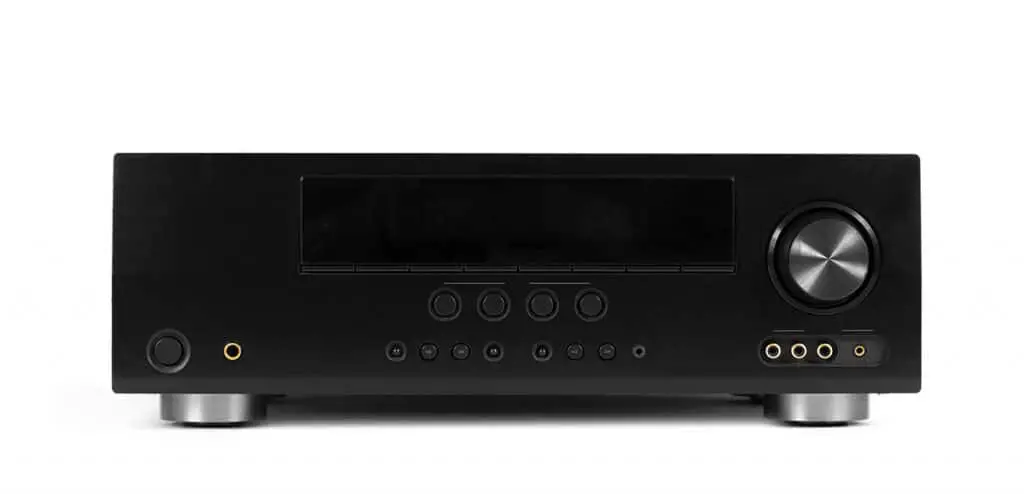
The Sugden A21 provides a sharp, clear sound with a lot of depth to it and remarkable bass quality. Although it’s rated at a much lower power level than others, it can hold its own among competitors. The Sugden A21 is relatively small compared to a lot of amplifiers. The design is simplistic but elegant.
The prices at which you can find the Sugden A21 are pretty reasonable, especially compared to other vintage amplifiers. One disadvantage is that it uses DIN connectors, which can create problems with connectivity in the long run.
Mission Cyrus 2
Specifications:
- Power output: 50 watts per channel into 8Ω (stereo)
- Frequency response: 1Hz to 50kHz
- Total harmonic distortion: 0.003%
- Input sensitivity: 0.2mV (MC), 3mV (MM), 50mV (line)
- Signal to noise ratio: 75dB (MC), 84dB (MM), 86dB (line)
- Dimensions: 85 x 215 x 345 mm (3 x 8 x 14 in)
- Weight: 5 kg (11 lbs)
- Finish: black / grey
- Year: 1984
- Price: c. $350
Cyrus 2 is a stylish amplifier from the 1980s that immediately catches your eye. It features a significant improvement from its predecessor, Cyrus 1, with increased headroom and power.
The sound of Cyrus 2 is lively, powerful, and quite precise. It performs well enough to compare with modern amplifiers. The case has a unique look with incredible paintwork. All these features come at a pretty reasonable price point, which means the amplifier will deliver a lot of value for your investment..
One major advantage of Cyrus 2 is the fact that the company is still committed to servicing even the earliest models in order to bring them back to life. Therefore finding parts and maintenance services is significantly easier than with other alternatives.
A&R A60
Specifications:
- Power output: 40 watts per channel into 8 ohms (stereo)
- Frequency response: 20Hz to 20kHz
- Total harmonic distortion: 0.2%
- Input sensitivity: 0.1mV (MC), 2mV (MM), 100mV (line)
- Signal to noise ratio: 63dB (MC), 70dB (MM), 85dB (line)
- Dimensions: 450 x 255 x 60 mm (18 x 10 x 2 in)
- Weight: 5 kg (11 lbs)
- Year: 1977
- Price: c. $70
The A&R A60 is another affordable amplifier from 1977. It’s an excellent classic with good
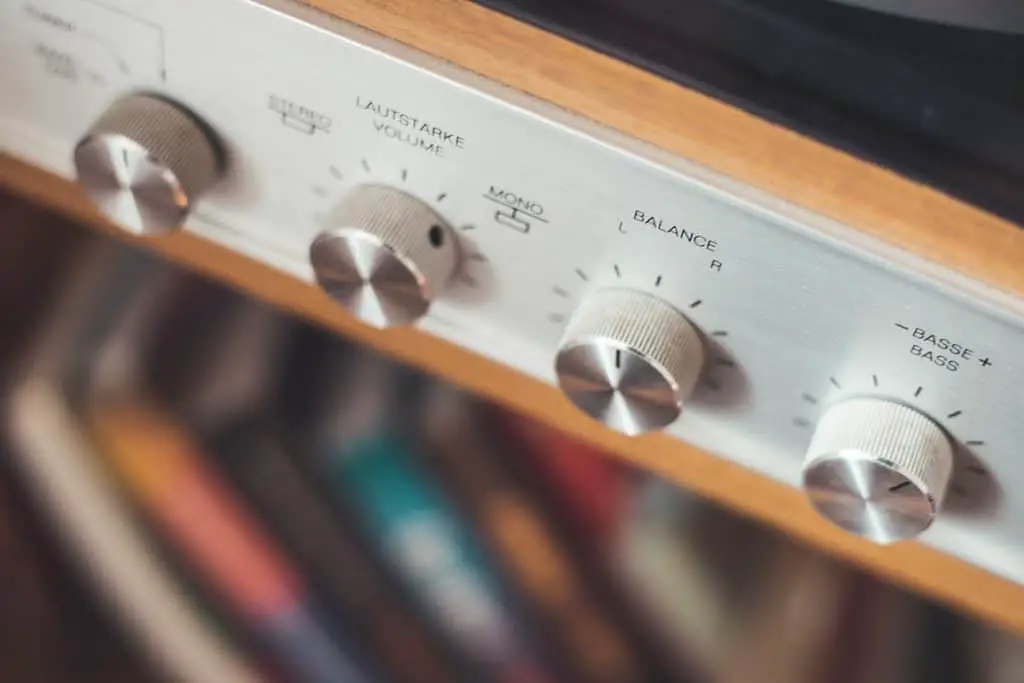
sound and an impressive built-in phono stage.
The sound is smooth and powerful without being too harsh or abrasive. The bass is superb, although it doesn’t exactly pack a punch the way some contemporaries in the same price range do. The A60 impresses with an eye-catching, sleek, and retro design when it comes to design.
The A&R A60 is very affordable; you may find earlier versions with DIN sockets at around $30, or you can spend a little more for later, more sophisticated versions. Either way, it can be an excellent starting point from which you can move onto more sophisticated models. Therefore if you’re looking to buy your first amplifier, this might be the ideal choice.
Audiolab 8000A
Specifications:
- Power output: 60 watts per channel into 8Ω (stereo)
- Frequency response: 20Hz to 20kHz
- Total harmonic distortion: 0.05%
- Input sensitivity: 0.11mV (MC), 2mV (MM), 100mV (line)
- Signal to noise ratio: 75dB (MC), 78dB (MM), 80dB (line)
- Speaker load impedance: 4Ω to 16Ω
- Dimensions: 445 x 74 x 335 mm (18 x 3 x 13 in)
- Weight: 7.6 kg (16.8 lbs)
- Year: 1985
- Price: c. $300
Audiolab 8000A is a powerful, high-quality amplifier with a clear and cohesive sound. It first came out in the 1980s, but it was produced by Audiolab until the 90s, so you may find newer versions.
The sound of 8000A is very powerful and dynamic, although it can get harsh if pushed too hard. The design includes many exciting features, and the tone controls are excellent.
A disadvantage of 8000A is that sometimes the quality of connections and sockets
might be poor, and it might need servicing.
Creek CAS4040
Specifications:
- Power output: 30 watts per channel into 8Ω (stereo)
- Frequency response: 20Hz to 20kHz
- Input sensitivity: 2.5mV (MM), 250mV (line)
- Signal to noise ratio: 79dB (MM), 79dB (line)
- Dimensions: 420 x 60 x 185 mm (17 x 2 x 7 in)
- Weight: 4.4 kg (9.7 lbs)
- Year: 1983
- Price: c.$90
This amplifier is known for its very soft and smooth sound. It came out in the early 1980s, and even when it was introduced, it was presented as a high-quality amplifier at a more reasonable price than most. For a budget amplifier, it was incredibly popular and managed to stand apart from the rest at the time.
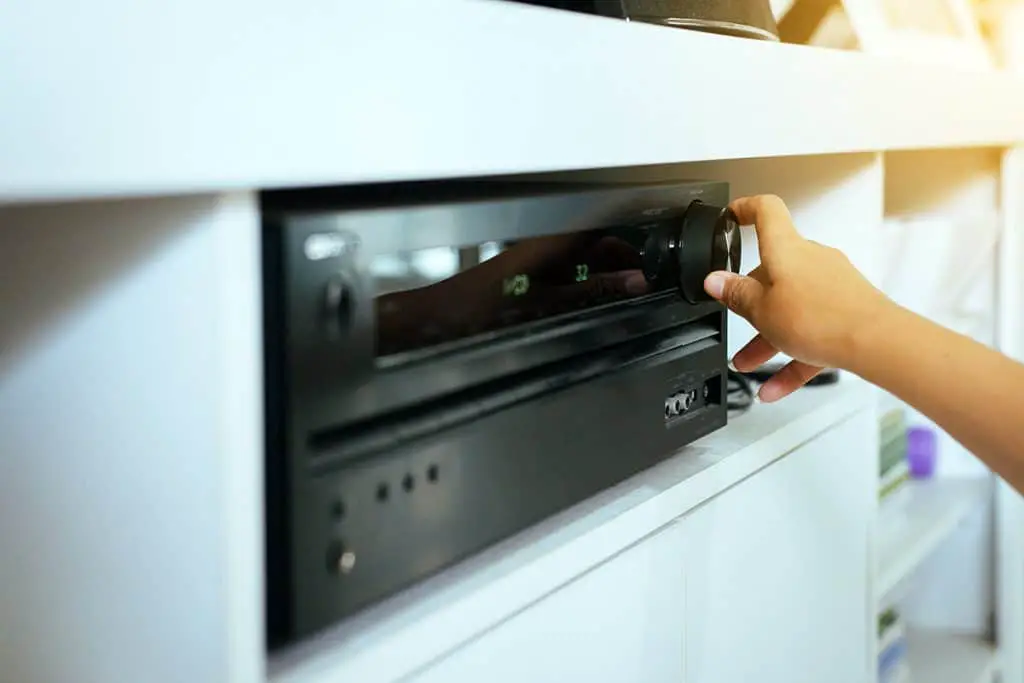
CAS4040 has a sweet musical sound, much smoother than most of its competition at the time. It is powerful and dynamic enough for its size. Some disadvantages of the original included a high level of distortion at times, which was then remedied in the subsequent units produced.
You can find a CAS4040 at excellent prices nowadays, ranging from $150 to $400.
Naim NAIT
Specifications:
- Power: 13 watts per channel into 8 ohms
- Features: mute switch, tape monitor switch, Solid-state integrated amplifier
- Inputs: one tape monitor, one MM phono input, two line-level inputs
- Dimensions: 206 x 286 x 76 mm (8 x 11 x 3 in)
- Year: 1984
- Price: c.$860
Naim Nait is probably one of the most legendary pieces of hi-fi of all time. Introduced in 1983, the Nait was the subject of many debates because of its unique sound and design. Decades later, it’s still considered a legend and a favorite among integrated amplifiers.
Nait’s sound is strong and dynamic, despite the low power output. The tone is warm, and the bass is dry. Nait shines in the high range, smoothing the edges, but it can be harsher in the mid-range.
The design of the Naim Nait is elegant and simplistic; it’s a small, black aluminum case. It’s pretty expensive compared to other 1980s amps, but its unique sound makes it worth the money.
Price Comparison
| Vintage Amp | Price |
| NAD 3020 | c. $150 |
| Marantz 2270 | $550 – $1300 |
| Pioneer SX-1250 | $800 – $3700 |
| Yamaha CR-1020 | $800-$1200 |
| Sugden A21 | c. $200 |
| Mission Cyrus 2 | c. $350 |
| A&R A60 | $70 – $150 |
| Audiolab 8000A | c. $300 |
| Creek CAS4040 | c.$150-$400 |
| Naim NAIT | c.$860 |
As you can see, the price ranges from $70 to $3700, which is not unusual because we’re talking about vintage amplifiers. You might find much lower or higher prices at a vintage store near you, but these are the prices you will most likely encounter.
The cheapest options would be A&R A60, Creek CAS4040, NAD 3020, and Sugden A21. Even though they’re relatively inexpensive, that doesn’t mean they won’t perform at the same level as the most expensive ones. These cheap turntable amplifiers are smaller and more compact than the others, but they produce high-quality sound nonetheless.
Power Comparison
| Vintage Amp | Power |
| NAD 3020 | 20 W per channel into 8Ω |
| Marantz 2270 | 70 W per channel into 8Ω |
| Pioneer SX-1250 | 160 W per channel into 8Ω |
| Yamaha CR-1020 | 70 W per channel into 8Ω |
| Sugden A21 | 23 W per channel into 8 Ω |
| Mission Cyrus 2 | 50 W per channel into 8Ω |
| A&R A60 | 40 W per channel into 8Ω |
| Audiolab 8000A | 60 W per channel into 8Ω |
| Creek CAS4040 | 30 W per channel into 8Ω |
| Naim NAIT | 13 W per channel into 8Ω |
The most powerful turntable amplifier is the Pioneer SX-1250, at 160 W, followed by Marantz 2270, Yamaha CR-1020 at 70, and Audiolab 8000A at 60.
The greater the power output, the louder the amplifier will be. Plus the difference between a 50W amplifier and a 100W one doesn’t mean that the latter will be twice as loud as the former.
Generally, an amplifier at 50 to 100 watts is good enough for a home setting. Anything more than that would be more suitable for bigger spaces.
Best Vintage Turntable Amplifier
The best vintage turntable amplifier I can recommend would be the NAD 3020, based on a combination of features and price. It’s a very high-quality amplifier that provides smooth, clear, and detailed sound. It might not have the biggest power output, but it can still outperform even new amplifiers, thanks to the impeccable craftsmanship with which it was designed.
At around $150, it’s among the cheapest options you might have for vintage amplifiers for the kind of quality it offers. If you’re after power and are willing to spend whatever it takes, Marantz 2270, Pioneer SX-1250, and Yamaha CR-1020 are probably three other good options.
If you’re looking for cheaper vintage amplifiers that still provide a perfect sound, you may check A&R A60 and Creek CAS4040.
VacationVinyl.com is a participant in the Amazon Services LLC Associates Program, an affiliate advertising program designed to provide a means for sites to earn advertising fees by advertising and linking to Amazon.com. We also participate in other affiliate programs which compensate us for referring traffic.
